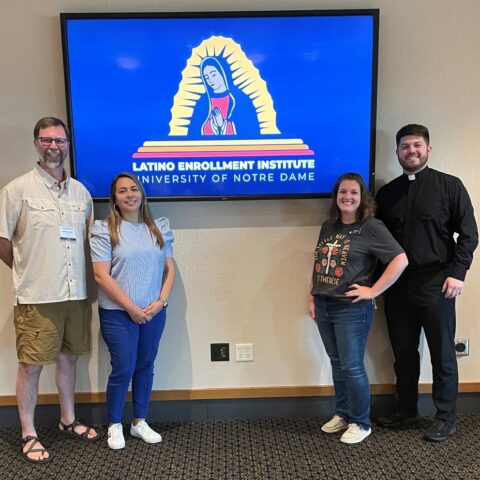SUBIACO — Of all the details decided leading up to the funeral of a dignitary, one element that has been crossed off the list for many years prior to the April 1 death of Bishop Emeritus Andrew J. McDonald was selection of the coffin.
Bishop McDonald handled that detail himself some 30 years ago.
“The bishop attended a funeral here, and he saw the coffin we had made for the monk,” said Abbot Jerome Kodell, OSB. “This was back in the 1980s when he was still, of course, very vigorous. He requested that we make his and, of course, we were honored to do that.”
Like all of the abbey’s coffins, Bishop McDonald’s is constructed of yellow pine grown and harvested right on the abbey grounds. The simple design has rounded hand holds at the bottom to give pallbearers something to grasp. A removable black walnut cross rests inlaid in the lid. The cross is frequently given to the family prior to burial, so the cross-shaped carved socket is stained a dark shade to stand out when the cross is removed.
“That way the family can take the cross with them, and the coffin is still marked with a cross,” Abbot Kodell said.
The abbey has made coffins for the funerals of its monks only since the late 1970s, meaning Bishop McDonald is the first non-member to rest in the handiwork of the self-described “country monks.” Working off a photograph of Pope Paul VI’s coffin published in Time magazine in 1978, the monks developed a similar design for the Subiaco community.
Prior to that time, the abbey bought coffins through a local funeral home as needed, until the community decided it could be better handled in-house and added coffins to the abbey’s wood shop repertoire.
Since the late 1980s, Abbot Kodell himself has been one of the lead constructors of the coffins, initially taught by the abbey’s master woodworkers. He calls the work of building the coffins “spiritual” but acknowledged a lighter side to his unexpected knack for the job.
“There’s a running joke here,” he said. “Don’t let the abbot near you with a tape measure.”
Today, when a particularly nice piece of wood comes through the abbey sawmill, it is set aside specifically for coffin-building and the community keeps six coffins in reserve at any given time. Unlike some religious communities that manufacture coffins as a means of financially supporting the monastery, Subiaco only builds coffins for its own use.
“We get a lot of requests for coffins from people, but we’re just not set up for that,” Abbot Kodell said. “But if someone does request one, we are more than happy to share the design plans with them.”
A notable exception to this rule, of course, is the late Bishop McDonald, although Abbot Kodell said given the relationship the bishop maintained with the abbey, the project — meticulously measured to accommodate his miter — felt just like building for one of their own.
“He was a very close friend to the community and to me, personally,” Abbot Kodell said. “During his first visit here as bishop in 1972, my predecessor Abbot Michael Lensing said, ‘Bishop McDonald, this is your monastery.’ It’s a very, very great honor for us and we’re glad to do that.”




